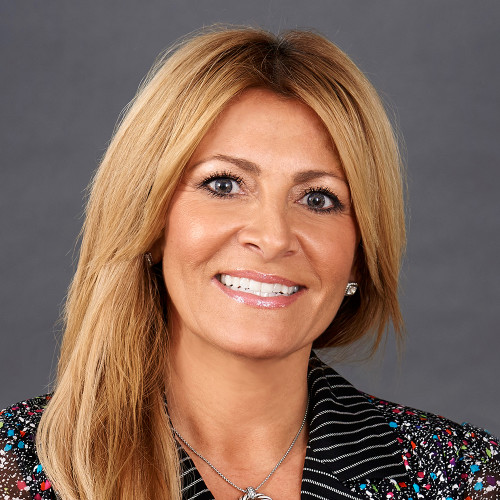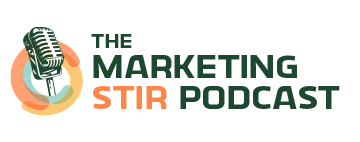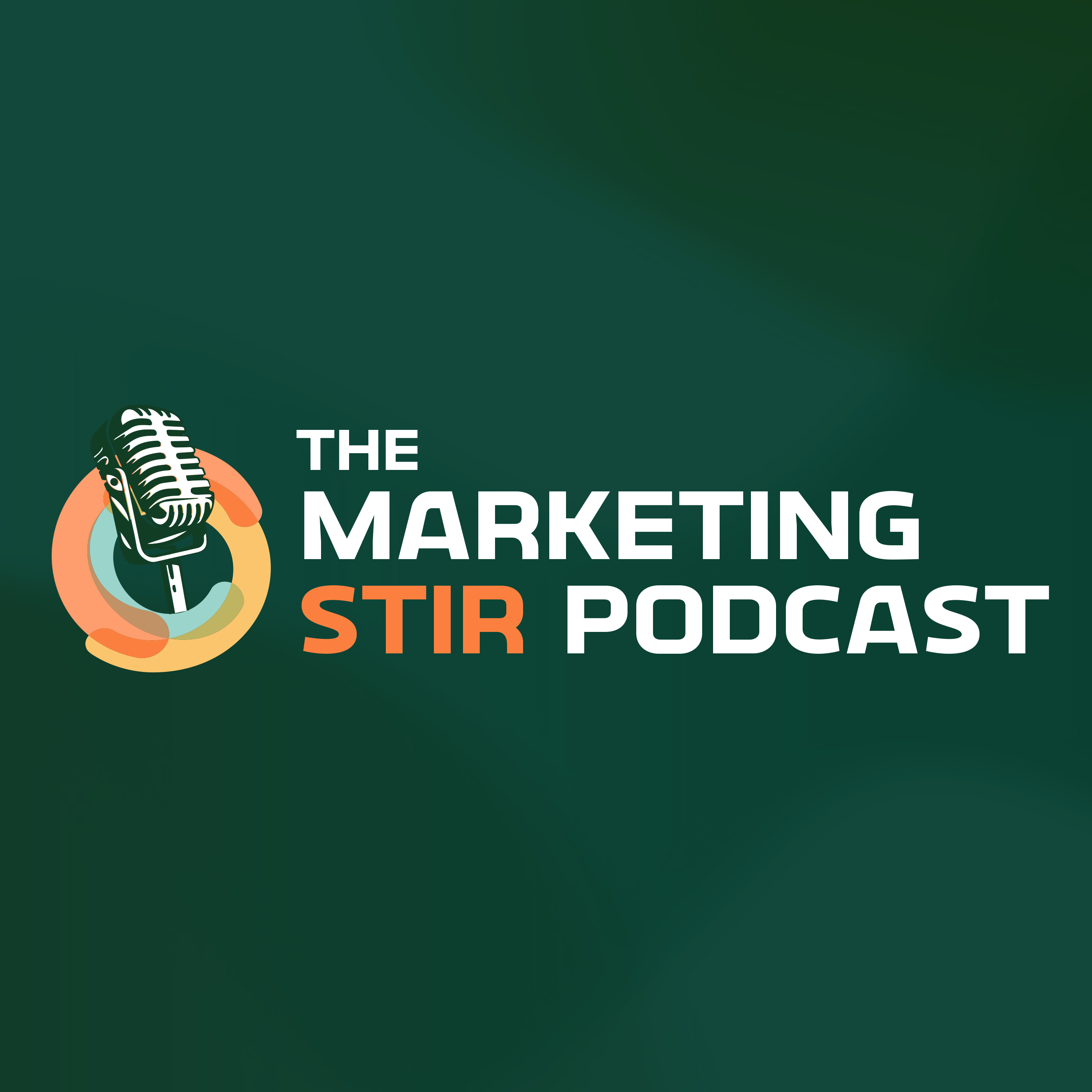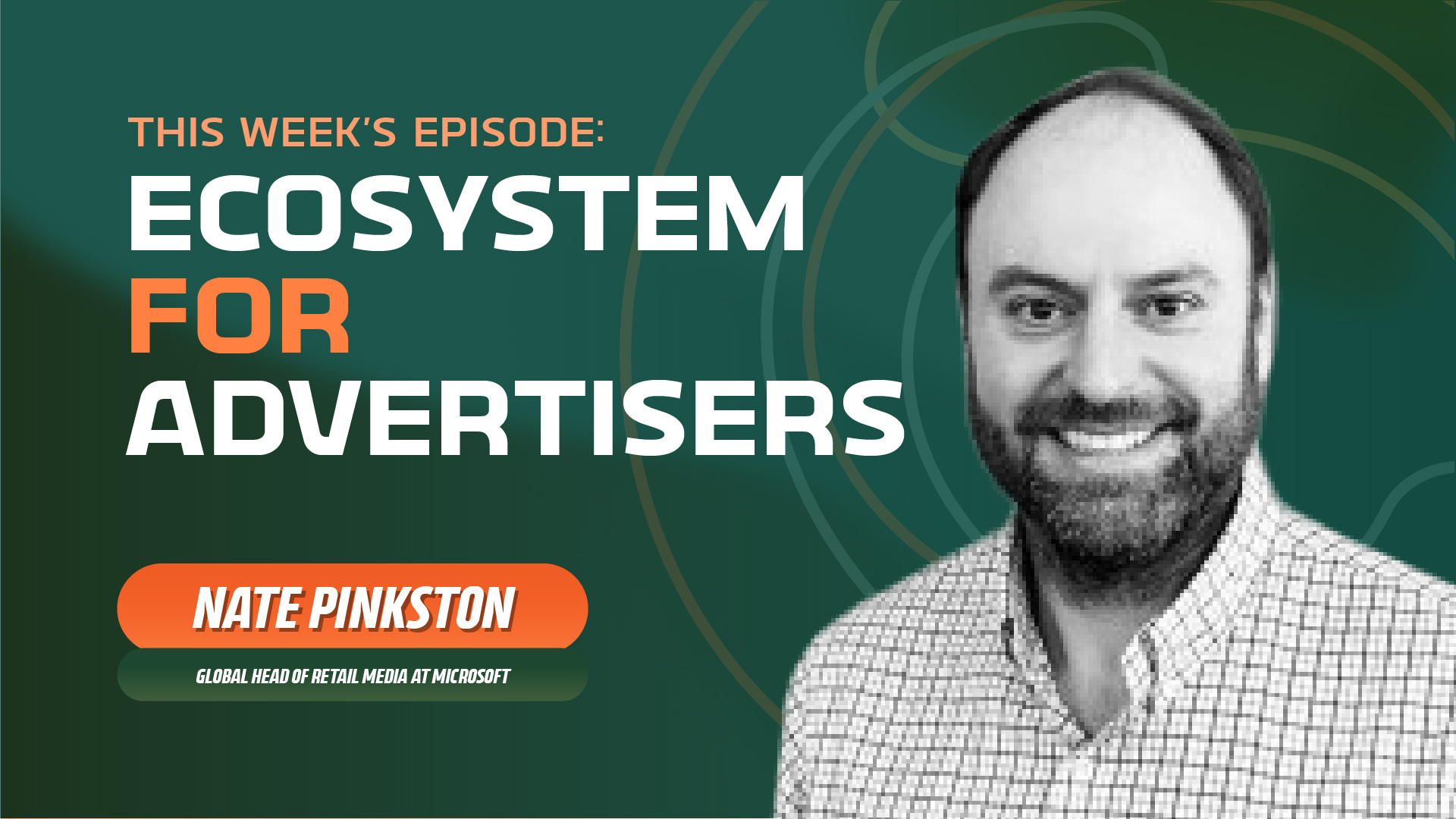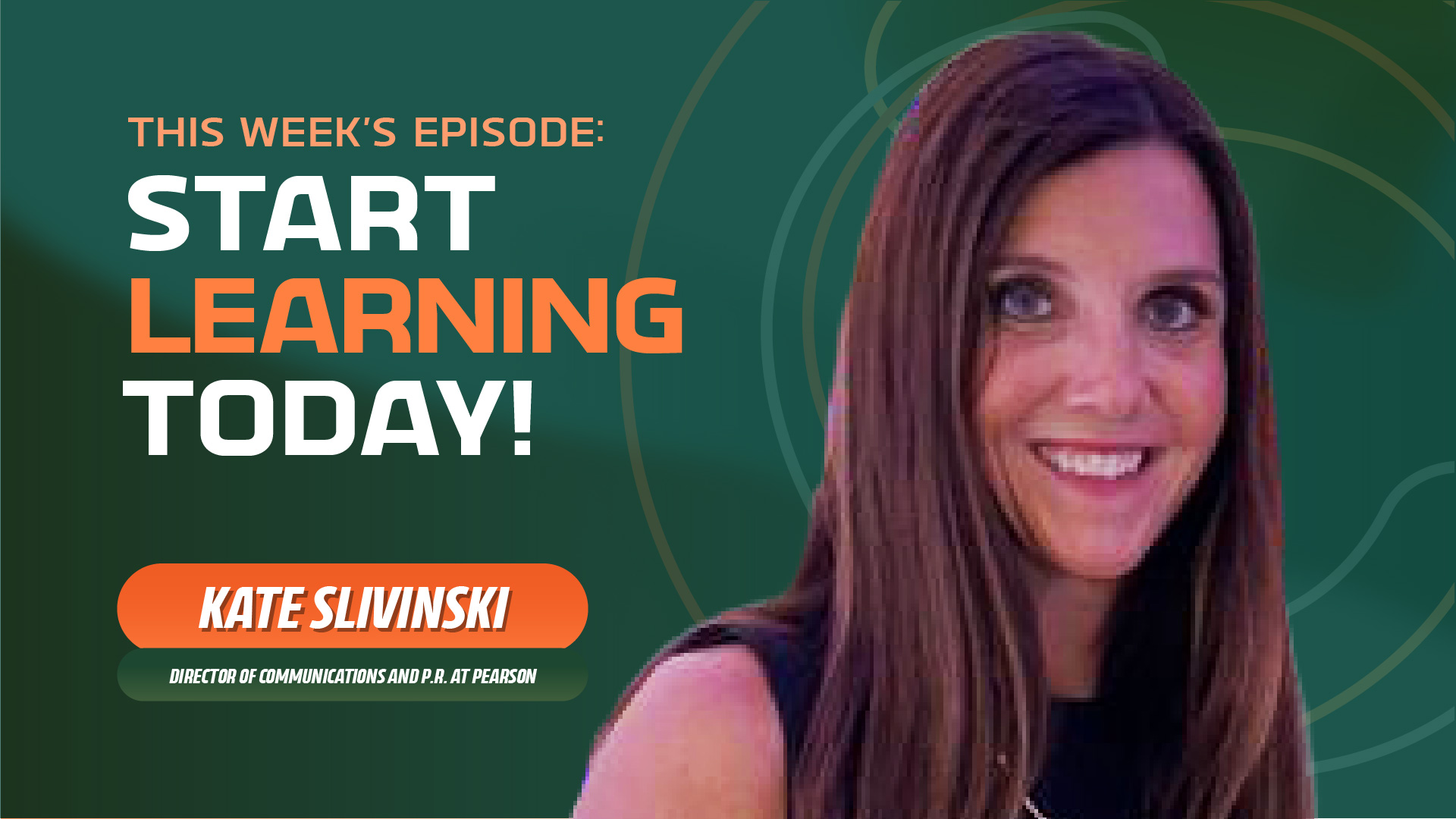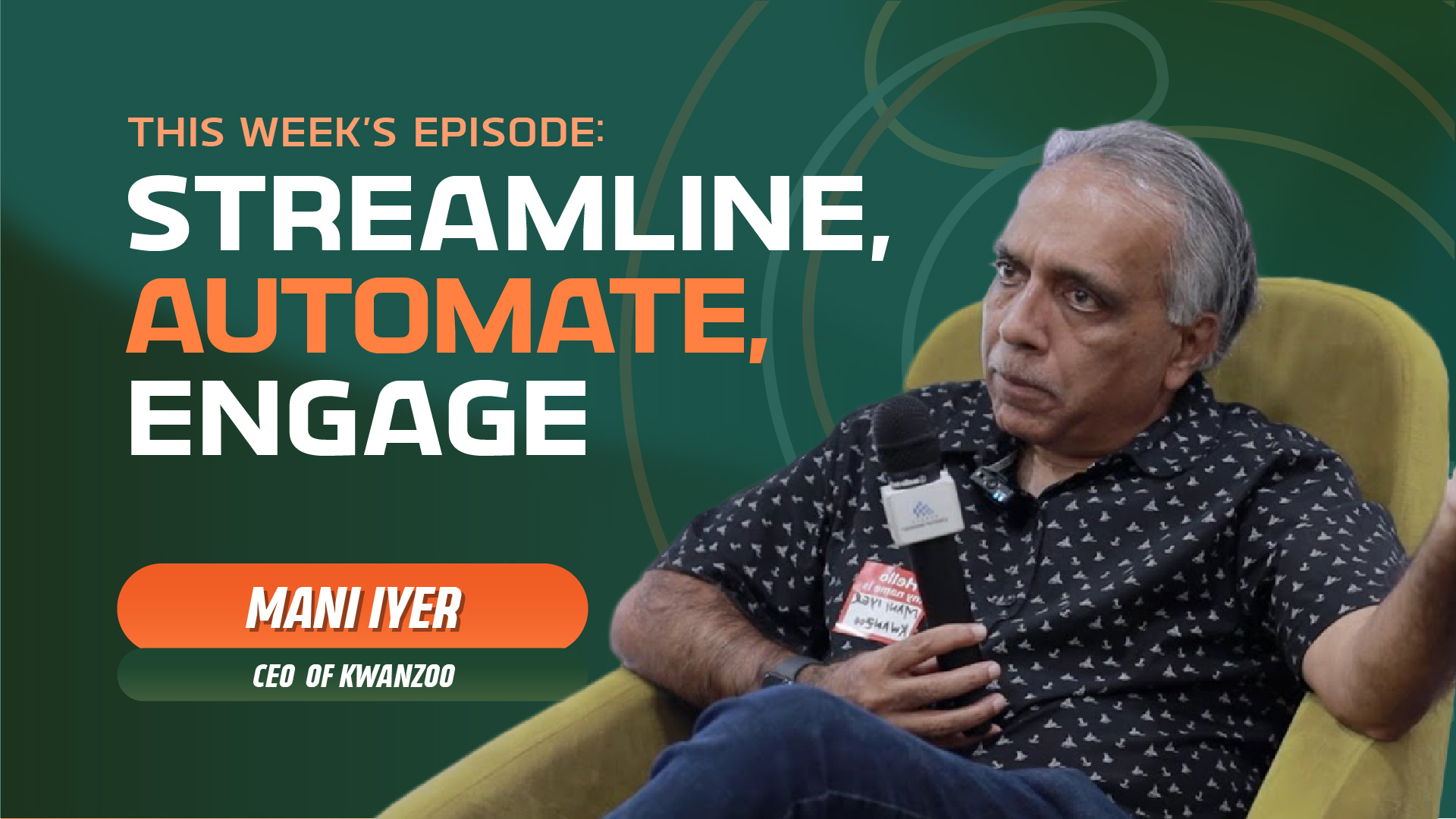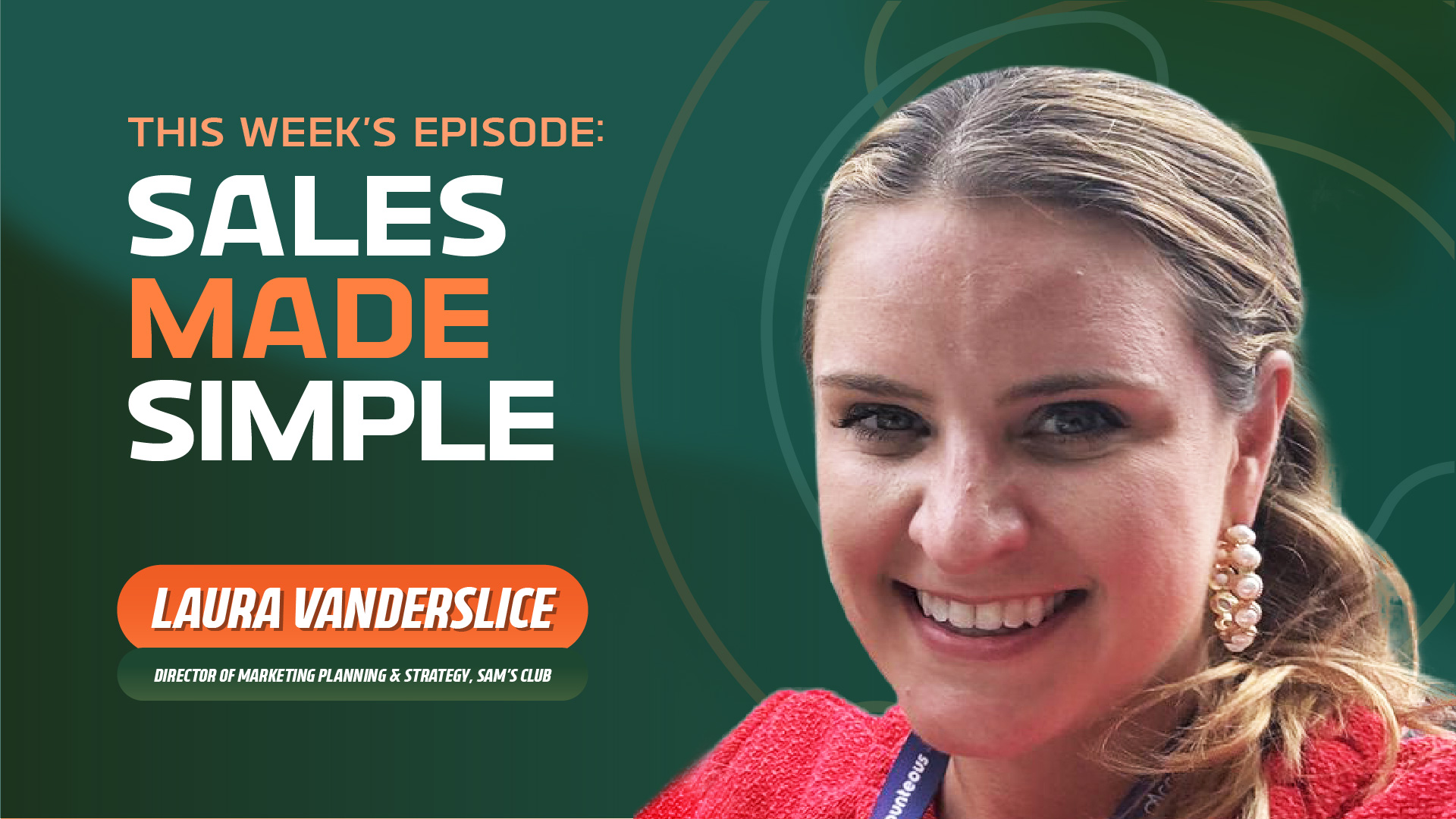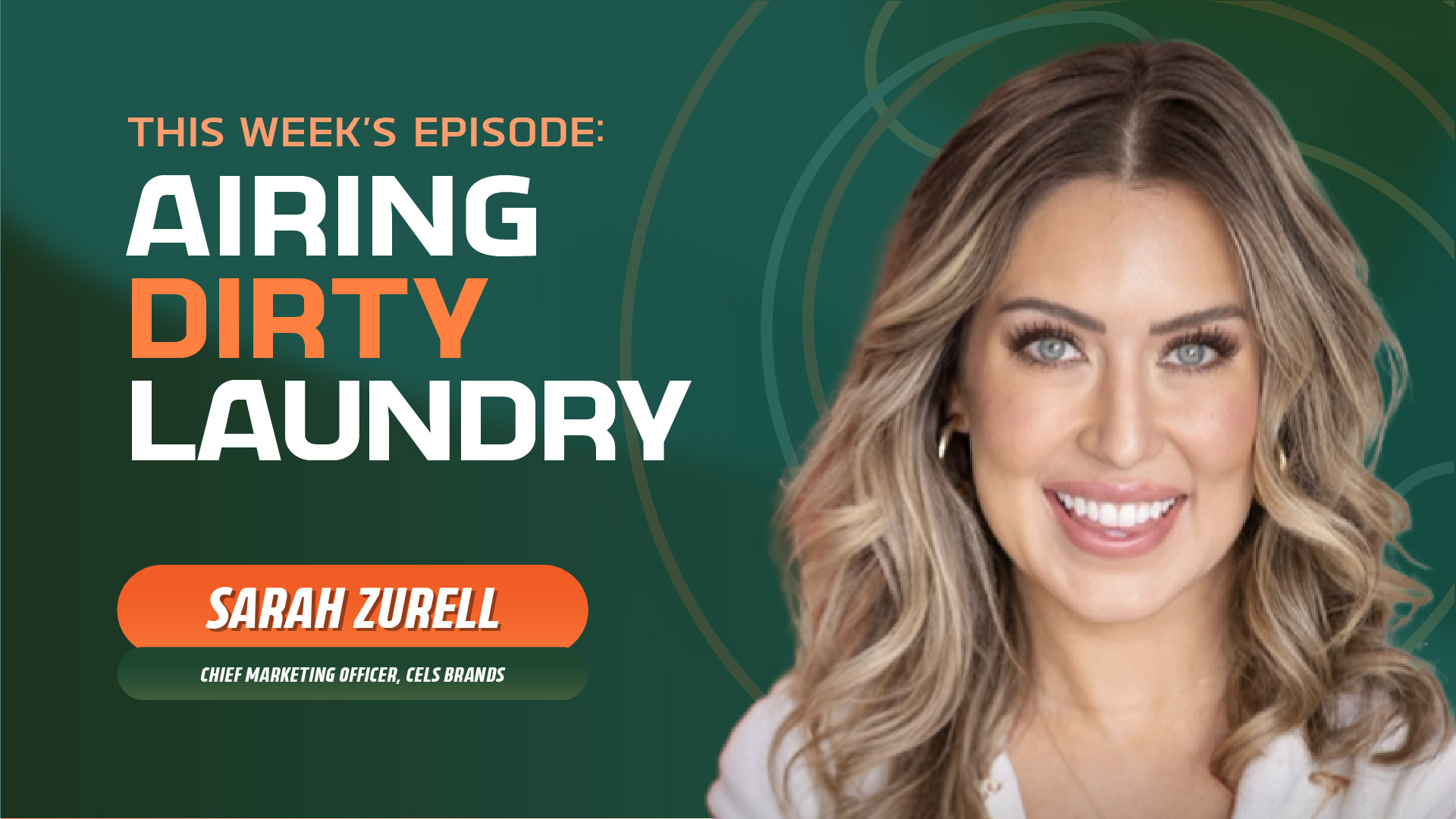Fariba Zamaniyan (VP, Advanced Media and Advertising TiVo) - Happening in a Big Machine
- 0.5
- 1
- 1.25
- 1.5
- 1.75
- 2
Speaker 1: Welcome to The Marketing Stir podcast by Stirista, probably the most entertaining marketing podcast you're going to put in your ear. I'm Vin, the associate producer here at Stirista. The goal of this podcast is to chat with industry leaders and get their take on the current challenges in the market, and we'll have a little fun along the way. In today's episode, Ajay and Vincent chat with Fariba Zamaniyan, VP of advanced media and advertising at TiVo. She talks about how TiVo is more than an original DVR service and how they utilize data to evolve and change the world of entertainment access through television. Ajay's wrist heals steadily, and Vincent is feeling below average. Give it a listen.
Vincent Pietrafesa: Ladies And gentlemen, welcome to another episode of Stirista's The Marketing Stir. You're hearing my voice, that must mean one thing. It's me, Vincent Pietrafesa, the vice president of B2B products and still interim general manager of access to B2B. We'll see, stay tuned to see if I'm still the general manager. Don't worry about it, either way, I'm fine here at Stirista. We're doing some great things. First of all, who is Stirista? Let's talk about that real quick, pause for a station identification, as they say in the business, I suppose, I don't know. Stirista, we are a marketing technology company that focuses on identity. We own our own business to business database, our own business to consumer, people, utilize us to target those databases, to get new customers, to upkeep their current CRM. We send email marketing. We own our own DSP called Aster so we could do connect to TV OTT. Email me at vincent @ stirista. com if interested. So many people have already emailed me to tell me good things about the podcast, to tell me maybe other things you want to hear in the podcast, so great. We appreciate that, and I appreciate this next person. He's my co- host, you know him, ladies and gentlemen. He is my CEO, my commander in chief as I call him. Ladies and gentlemen from San Antonio, Mr. Ajay Gupta. What's up, Ajay?
Ajay Gupta: Hey, Vincent. It was starting to go a little bit crazy with my wrist since I can't play two tennis, so I tried playing, well, I didn't try, but I was going to go support our indoor volleyball team, but turned out we showed up on the wrong day. We showed up a week early.
Vincent Pietrafesa: Look, we're ready. Obviously, the team is ready if you show up. How is the wrist going? For those of you who are listening on the podcast, Ajay and I, we talk about our ailments a lot. My arm is still broken. I'm healing like I'm a 96- year- old man, and I'm not 96. Ajay had a operation on his wrist. That wrist is very important, ladies and gentlemen, because A, he signs my checks with that wrist, and also no one actually signs checks anymore, do they? But he also is one of our star tennis players and represents the Stirista inaudible Tell me about the wrist, Ajay.
Ajay Gupta: I think I'm healing like a 28- year- old, so a little bit better than you
Vincent Pietrafesa: Rubbing it in. He is not 28 ladies and gentlemen who are listening, he's not. crosstalk He's not so far from it.
Ajay Gupta: Well, closer to 28 than you are, crosstalk it at that.
Vincent Pietrafesa: Very true. Very true. Very true.
Ajay Gupta: But no, it's coming along, but unfortunately can't really do anything for another weeks, so it's driving me a little stir crazy.
Vincent Pietrafesa: No, I hear you. I hear you. It's like when in the beginning where we were figuring out what to do and hey, we need to go out there and meet people and make people laugh or just say hello to people, and then we're like," Well, let's start this podcast," and we did, March of 2020, and now we're well over 100 episodes. We continue to get amazing guests. Thank you so much, and that is my segue way into this next guest. So every once in a while, I shouldn't say every once in a while, you know what? Our team says," Hey, you have got to talk to this person. She is amazing." That's coming from Hamid Kaun. That's coming from Brian Gold, and then I met her and I was like," Wow, we have to have her on this podcast." She is from a company called TiVo. You've heard of TiVo. We're going to get into that. I love TiVo. I had it, but she's going to talk about just more than what other people may know about TiVo, it's so much more than that. Please, ladies and gentlemen, a warm welcome a fellow New Yorker. She's the VP advanced media and advertising at TiVo. Please welcome, Fariba Zamaniyan. What's going on, Fariba?
Fariba Zamaniyan: Thank you. Hello. Hey, everyone. It's so great to be here. I love your energy, Vincent. Thank you so much for having me.
Vincent Pietrafesa: Thank you so much. At least someone loves it. You should see my wife in the morning when I'm just like," It's a good morning," she's like," What's good about it? The kids wouldn't sleep last night," but no, I appreciate that. I have extra energy this morning. We're recording this on a Friday, but it's early and I'm just happy that you're here for so many reasons, Fariba. Thank you for agreeing to be on the podcast. Let's get into it. I love your title. I think that's one of the first of its kind of that title, so let's get it right out of there. TiVo, people know of it, but I'd love to talk about TiVo what you're doing there, your day- to- day, your title and give us an overview of TiVo as you know it.
Fariba Zamaniyan: Yeah, no, it's one of my favorite questions, Vincent, because I've been with the collective organization for 12 years now. It's hard to believe when you think about it. It's like," Whoa, 12 years?" But it's a brand that so many of us know, especially, when you think about TV and its evolution over the years, especially right now, which is such an incredible time. It's so exciting and TiVo is, you get the warm and fuzzies when you hear the name TiVo, especially for those of us who've been around. It's an iconic brand. It's synonymous with entertainment, enjoyment, which is what we all love. We are so consumed with content and thankfully the marketplace is giving us this incredible content that we're just eating it alive. We can't get enough of it. TiVo has been a brand that's been there on the forefront of technology that's been bringing this entertainment experience onto your television screen, whether it's the main one in your living room or in your bedroom or in the playroom. What I think is the biggest misconception of TiVo is that, although it is our most beloved product, which gives us this synergy with the name and that love is the DVR. That's our claim to fame. We brought it to market over 20 years ago, and I'm incredibly proud of that development because if you think about what we do today behaviorally, we want to watch programming when we want to watch it, when we want to go into now with streaming and all the great content that's available for paid services and free services. We want to watch it when we want to watch it, and that's really what the DVR set out to do over 20 years ago with this new technology that was enabling you to record your shows and watch them when you want to watch them on a delayed basis. Fast forward 20 some odd years here we are in that same context, which is what TiVo's really been in that space of enabling and building technology that enables consumers to find, watch when they want to watch that favorite programming, regardless of your demographic, older consumers and households with kids, it's that experience, which is really the basis of our company and what it's been all these years. It's been about technology, and that technology has really evolved well beyond the DVR, even through to today. It's just that you may not see us on the screen, white labeled was what we referenced, but our technology is on the back end. So we have metadata that fuels what goes into a program guide. So if you're surfing through a guide looking for programming that you want to watch, all of those tiles that are in that guide is populated by data, which is fueled by TiVo. Fast forward again into today's world, where you're looking for and searching for shows that you want to watch on your media player, or even on your pay TV service, that search and recommendation technology is also powered by TiVo. So that is enabled for pay TV services, like your cable company, as well as streaming devices, and we've gotten even more advanced. We've had several acquisitions, as many companies have evolved over the last decade or so, we too, have undergone lots of change. We're really focused on now bringing that entertainment experience through products that are similar in innovation to what many households have. We introduced a media player last year called the Stream 4K. So think of it similar to a fire stick or a Roku download device. That was our entree last year, so bringing your favorite shows into one screen when you're searching for something to watch, which I know we'll talk about a little bit is one of the frustrations that comes with all this incredible content is, how do you find that in an easy format? So TiVo is right now in the process of helping consumers pass through that pain point, and we've got some more exciting things to come. We introduce our TiVo Plus, which enables consumers who subscribe to TiVo to be able to aggregate all that free content. So without paying for service, we reference it in the industry as AVOD, which is Advertising Supported Video on Demand. So we have a tech software that basically brings that into one screen, enabling you to find what you want to watch without having to pay for it, so lots of great things and well beyond our heritage as the DVR company.
Ajay Gupta: Yeah. Wow. That's why I wanted you to talk about it because it is so much more, but looking back at that heritage the first really, I think I remember, whoop, whoop, with the noise and everything.
Fariba Zamaniyan: Yeah.
Ajay Gupta: ...just having that and that's interesting to see because you're like," Well, you see that in programming guides, but hey, you may not know that might be TiVo fueling it." So thank you, TiVo, for doing that technology. I remember the first time I had it, I had it through a cable company that was already installed in it, RCN. I don't know if we can mention that-
Fariba Zamaniyan: Yes.
Ajay Gupta: ...or not. Good again. Good. crosstalk.
Fariba Zamaniyan: You sure can.
Ajay Gupta: RCN did great by me many years. They're a great company regionalized, I think, right?
Fariba Zamaniyan: yeah.
Ajay Gupta: For us New Yorkers here, you don't have access to that great, there Ajay in San Antonio, but I would love to hear about that. That's awesome. So Fariba, but the next question is we love to ask in The Marketing Stir, so many marketers listening.
Fariba Zamaniyan: Yeah.
Ajay Gupta: How did you get into this business? How did you get into marketing?
Fariba Zamaniyan: Well, I wish I could say it was like," Oh, this is what I'm going to do for the rest of my life," when I was a wee teen. But to be honest, I went to Ithaca College, ooh, Ithaca, it was an amazing experience and a university that actually had a very strong presence in marketing and media communications. They have the Roy H. Park Group, and I knew that I guess I should stop and play back a little bit about myself and a little bit of background is that I'm a first generation. My parents are immigrants, Persian, Iranian descent. They were here well before the Revolution, and one of the things that they were incredibly excited and enjoyed doing with their children as they were in America, and all of the opportunities was consumed by entertainment, going to movies, watching television programming. I was captivated by television and I loved advertising. I loved watching the ads as much as I did the shows. we were a traditional household. Sunday nights, we'd sit down, watch Solid Gold and Donny and Marie and all those. I'm dating myself, but just want to say we were really into it. I graduated with a marketing degree in bachelor of science and I knew even early then that advertising entertainment was an inspiration to me. Now, how I fell into marketing really was by chance. I didn't know what avenue, it was also a recession. I actually got an opportunity to join the Nielsen Company, which back then was owned by Dun& Bradstreet. But many of you know Nielsen's been the measurement company tracking currency of ratings, which is the basis for how advertising dollars are determined. I started basically in the research side of marketing and that's been the foundational element for me is really that quantification. I love quantifying things and understanding behaviors because I assimilate them to my own, is that while I like to watch this stuff when I want to watch and this much of it. I found this passion in bringing my own interest into my work and at that very early stage was really about understanding the impact of advertising. Working with Nielsen gave me that great foundation of really understanding the importance, not just to me, but in a much broader scale. Then, really I had the good fortune of working with other marketing and research firms, such as the MPD Group and Ipsos, had a couple of startups, but all throughout I was charged with being able to build products that enable or support the planning and activation of advertising and building those products from scrap and having responsibility, not just for product development, but also how am I going to scale and bring that product to market and leverage my expertise, but also still be incredibly driven by the fact that this is advertising and programming? This is fun. This is the stuff we love. It just was very endemic and got my juices flowing and X number of years later, I'm not going to tell you the total, but you can probably gather because I gave away with my Solid Gold viewing behavior on Sunday night, which was, by the way, one of the best shows ever is really how I got my entree into it. Fortunately, I've worked with great companies and in the last 12 years with TiVo of really bringing that passion to fruition and here we are today.
Ajay Gupta: It's funny, all three of us went to college in upstate New York. So I went to St. Lawrence and Vincent went to SUNY Oswego.
Fariba Zamaniyan: Wow. Oh, yeah. Oh, yeah.
Ajay Gupta: What are the odds, right?
Fariba Zamaniyan: Yeah.
Ajay Gupta: So on the advertising line, data has obviously been a big part of what TiVo does. So what are some of the data innovations that you have seen and undertaken in your role?
Fariba Zamaniyan: So glad you asked that, because I think that when we think about where we are today and digital access to video content, digital is driven by data and think of it all happening in a big machine, in a warehouse. How I came to be at TiVo was actually because of data and the transformation that was happening in the industry as we think about how advertising plans are created and then actually executed, used to be done by very manual processes. I came to TiVo with this advancement that was happening that was actually the basis of one of, or actually a byproduct from our DVR technology was the ability to passively capture data from the set top boxes where our software is integrated to be able to think of it from 10, 000 feet to observe when, what, how much is being consumed, not just the programming, but also the commercial airings that happen within. So this is rep evolutionary because as I mentioned, Nielsen's method has historically been and is still today, the basis of it is panel- based, to opt- in, to essentially participate. It's a microcosm of the U. S. It's a smaller sample, less than 25, 000 households across the U. S., which is incredibly sound. I'm not dissing them for that, because based on where we were with technology, it was truly revolutionary and invalidated. But here we are with now this big data that's now seeping its way into the advertising ecosystem because of technological advancements that companies like TiVo had brought to the market, which is technology that without asking somebody for a survey question or recall what I watched last night, now this technology is passively collecting this data based on consumer consent, of course. You can opt out if you don't want your data to be passed back. But this data now, for those that have opted, and consumers that opt to enable that data on an anonymized basis to go into a central repository that is an incredible level of intelligence that we'd never had before as a marketer or an advertiser, is that I can observe with a big data set, and what big means is scale. Big is the more, the closer you get to census level, the greater the accuracy or the likelihood that you're representing truth. What that means is a reduction of risk, and for an advertiser, when they rely on building a media plan, they want to as much risk as possible. That risk is that, "My ad won't be seen, and if my ad's not seen by the target that I'm seeking, then that's waste." We're talking about billions of dollars in the advertising ecosystem. So just a little bit of waste translates to a lot of the loss in potential revenue and profits. So what TiVo did 12 years ago, which I'm very proud that I was one of the pioneers brought to a startup called TRA, which was acquired by TiVo was to harness this technology and build this data stack of passively- collected data that we could then use to inform media planning and advertising activation. Back then it was linear; today, it's digital. When I say digital, I think of what you're doing on your phone, your laptop, your iPad, as well as the big screens in your home. I know there's concerns around the ickiness of it, like when the early days with emails where you would go to search for your next vacation, and then next thing all these travel sites pop up in your inbox. You're like," How the hell do they know that I'm doing this?" Well, I think we all now know or have heard of cookies and all of that fun stuff. But this, again, just to reiterate, the data that we have and we leverage, and one of my responsibilities is to provide that data back into the marketplace to enable marketers to be more informed and reduce that waste, not just linear, but much more so today in the digital ecosystem, in a privacy- controlled manner. It's incredibly exciting to see the adaptation of the use cases that are really bringing lots of opportunities to the table in not just the sell side of the marketplace, but on the buy side.
Ajay Gupta: I think one of the cool things about TiVo, as you mentioned earlier, is the pivots you guys have made and being always ahead of the curve, whether it was DVR or now utilizing data in pretty innovative ways. So my question is for 2022, what do you guys have coming up that you can share?
Fariba Zamaniyan: Well, I think there's more excitement around our capabilities with our media player. So as I mentioned, we've got the Stream 4k, we've got TiVo Plus for those that are TiVo subscribers that really coincide with some of the pain points that consumers have and things they're looking for when it comes to video consumption. Finding what you want to watch and how you want to watch it with ease, our products and our innovations, especially what's behind the scenes in terms of search and recommendation data fuels advancement. So machine learning is the more data points that you have and the updates that you bring in only advance your products. So our search and recommendation tools are becoming more advanced with the data that we're bringing forward and then enabling opportunities for advertisers to advertise on our platform forms. So we, historically, haven't been a big player in providing advertisers with eyeballs from which to present their brand message. But going forward this year another addition, besides enabling content to come to the consumer screen with ease is also on the advertiser side to be able to present their brand message and their story to our very unique and broad customer base that are maybe not see our brand name up front, but where our technology lies enables us to have those touchpoints and a unique audience that we can bring to marketers with our connected TV touchpoint. So connected TV, basically bringing advertising capabilities in those advertising video on demand supported services, so those that don't require a subscription for example, which is a really exciting and hot topic area of 2022 for marketers is expanding beyond linear into these new digital means of getting access to content, which is where we're seeing consumers migrate because they want more content. They don't want less, they want more, and with more comes opportunity for a marketer touchpoints to deliver your brand message. So TiVo is very excited in 2022 to be bringing that capability to both marketers and consumers.
Vincent Pietrafesa: Fariba, we love to talk about television on this program. We really do Ajay and I, we love different TV shows and we talk about it a lot. I would love to hear from you, because I know TiVo does a biannual survey on video consumption trends, especially these last two years, right?
Fariba Zamaniyan: Yeah.
Vincent Pietrafesa: People have been, I think, consuming a lot of television. What are some of those readings or findings, if you will, that have shocked you from the last few surveys?
Fariba Zamaniyan: So it's been exciting to see consumer response. So we do a survey twice a year biannually against 5, 000 representative consumers across the U. S. and ask them about their video consumption across a host of different areas. So I'm going to ask you a question first, Vincent.
Vincent Pietrafesa: Yeah.
Fariba Zamaniyan: How many subscription services do you subscribe to?
Vincent Pietrafesa: So I probably subscribe to, I would say six.
Fariba Zamaniyan: Okay.
Vincent Pietrafesa: Six subscription services, yep.
Fariba Zamaniyan: You probably would be surprised to find out that the average today now is nine.
Vincent Pietrafesa: Come on.
Fariba Zamaniyan: Yes.
Vincent Pietrafesa: I'm below average? Come on.
Fariba Zamaniyan: You're below average.
Vincent Pietrafesa: Look at Ajay laughing.
Ajay Gupta: I'm below average anyway.
Fariba Zamaniyan: You're below average, Ajay.
Ajay Gupta: I know. crosstalk
Fariba Zamaniyan: Oh, womp-womp.
Ajay Gupta: You'll never hear that term at a company party, Vincent. crosstalk
Vincent Pietrafesa: I know.
Ajay Gupta: crosstalk bring it up again.
Vincent Pietrafesa: Thank you. Thank you. Well, I'm about to go subscribe to four more and bring my average up.
Fariba Zamaniyan: Yeah, bring your average up. crosstalk keep motivation for your weekend, especially-
Vincent Pietrafesa: Exactly.
Fariba Zamaniyan: ...with MLK on Monday.
Vincent Pietrafesa: yep.
Fariba Zamaniyan: But it's actually pretty humbling. For me, I was just like," Oh, my God. I'm above the average because I counted and I have 11," but hey, I'm in the biz I'm supposed to, right? So our latest update is that on average, consumers have about nine different subscription services and that's across the U. S. across all demographic profiles, geographies, that's the average. So that has gone up in probably four years from five almost doubling, and in the last two years, like you said, Vincent, obviously these are different years. We're all at home consuming more media, which has accelerated that hunger and that demand, but it's also the availability and the quality of the content that's coming out. So some may think that the nine is shocking. I was like," Okay, well I'm above average, but expected." But getting your feedback helps to level set that you may not realize that," Oh my gosh, there really are a lot of options out there."
Vincent Pietrafesa: Mm- hmm(affirmative).
Fariba Zamaniyan: So right off the top, I think that is really intriguing to find out that of that nine, the majority of them people are paying for.
Vincent Pietrafesa: Yeah.
Fariba Zamaniyan: So over six are paid- for subscriptions. So people are spending part of their disposable income and guess what? They're not cutting back. They're spending more or they're trying some and offsetting with other subscriptions, but what's even more notable is, and that we're finding from the surveys that over two- and- a- half of those subscriptions are the free. So some may think it's shocking and think," Oh, it should be weighted that people are going to subscribe more to free," but free tends to come with advertising. So the excitement level of getting access to programming and willingness to pay for it without commercials is still there. But I think one of the trends that was confirmed in our latest update, which is hot off the presses with Q4, is that it's starting to stabilize in that consumers are willing to get advertising exposure. They're willing-
Vincent Pietrafesa: Yeah.
Fariba Zamaniyan: ...as long as it comes for free. So 60% of the respondent said they'd be willing to be exposed to advertising as long as that content they're getting access to is free. So there's this onslaught of services and programming options that have come to consumers that now they're realizing," Well, if I can get that same quality and quantity through a free service, I'm willing to be exposed to advertising." So there is this now shift that we're starting to see in the coming year, and I think this is where the publishers are going to be on the hook is to bring great quality content to those viewers in a free environment, in an ad- supported environment because we are seeing that consumers are overloaded with lots of content to watch. One of the other findings is, and a pain point discovered is that it's getting hard to find what they want to watch.
Vincent Pietrafesa: Got it.
Fariba Zamaniyan: A lot of that has to do with you've got six services that you subscribe to, right, Vincent?
Vincent Pietrafesa: Mm- hmm(affirmative).
Fariba Zamaniyan: So you've got to go into each app every time to try to find, and one of the things that TiVo has done is try to bring all the different content across those apps into one screen to make it easier for you to watch.
Vincent Pietrafesa: Oh, wow.
Fariba Zamaniyan: So that's how we're trying to get past the pain point, but it's still there. Another thing you'd be surprised to hear is how many hours of video do you think you watch a day?
Vincent Pietrafesa: So me, not my four- year- old, so I would say crosstalk
Fariba Zamaniyan: Yeah, not your four- year- old.
Vincent Pietrafesa: I know, which I should limit, but I don't. But I would say video, maybe three hours a day, four hours. Am I below average again, please, don't tell because I can't take it if I'm below average again.
Ajay Gupta: No, please do share.
Fariba Zamaniyan: I'm sorry, Vincent. It's four-and- a- half hours on average.
Vincent Pietrafesa: Ah, this is Ajay's happiest episode because-
Ajay Gupta: Once it turns out, not only can you not read, apparently you can't watch videos either.
Vincent Pietrafesa: I can't watch. I know. It's like the not reading is, it's a recurring theme, I know, but oh, that's-
Fariba Zamaniyan: Below average, no.
Vincent Pietrafesa: Yeah. crosstalk
Ajay Gupta: That's the name of the Vincent is below average in everything.
Fariba Zamaniyan: Well, hopefully your listeners are not going to have that as the main takeaway today. We want them to think about how they can compare themselves, but also spin it on that equals opportunity for marketers, right?
Vincent Pietrafesa: Mm- hmm(affirmative).
Fariba Zamaniyan: There's a lot of time in the day that the average consumer is on their screen and connected. That is an opportunity to reach them, and that amount of time hasn't changed. That's actually been consistent with each survey that we've been doing over the last few years. So it's about four-and-a-half hours a day, and believe it or not, 70% of people are getting access to that video through a traditional cable provider, so a pay TV operator. It's a big misconception because the buzz, when we talk about it is, oh, everybody's cut the cord and nobody's watching live TV anymore. That's not true because what we find is that live TV demand is being driven by you want to watch your or local programs, you want to get to your local news, and more importantly, you want to get to your sports. You want to get to your sports. You want to see them when you want to, you don't want to record it or watch in delay. Plus, that experience on the big screen is what we all want, so that's some of the surprising stuff. I think that what seeing as we head into 2022, given some of the stuff that I just touched on is that consumers are not going to cut back on how much they want to watch, but what they want is an easier way to get to all of that content. That's where the opportunities lie for cable providers, for rebundling. People who have cable like you're an RCN customer. You talked to us in the beginning and said, you're really happy with your service.
Vincent Pietrafesa: Yeah.
Fariba Zamaniyan: Well, guess what? The majority of people are happy. The prices have come down. It's just now we want to get more bundling, meaning more stuff into one subscription that just makes it easier. We're humans, we want to get things, plus New Yorkers. We're running around. We want things fast. I got no time for this, and so finding what you want to watch in a format that doesn't require as much time and energy is really what consumers are demanding right now. Using voice control, it makes that easier and faster to do so. So those are some of the key highlights that we've crosstalk.
Vincent Pietrafesa: Nice. Then, you also helped answer my other question because I am not a cord cutter. I have a variety of different solutions, even though I'm below average there, I'm really tall, by the way, listeners. So I'm above average in some area, anyway, but so cable's not dead. It's not dead.
Fariba Zamaniyan: No.
Vincent Pietrafesa: No.
Fariba Zamaniyan: No.
Vincent Pietrafesa: Good.
Fariba Zamaniyan: It's not, big misconception. Is it going through a transformation? 100, so is everything. We're all going through a transformation in this day and age. Look at what we're contending with working from home on a regular basis, it's going through a transformation and technology is forced that, but those challenges are what makes us more creative. We rise to the occasion and develop means to overcome these obstacles and create and innovate. That's what's next for the cable industry just as it has been for the advertising ecosystem in media in total.
Vincent Pietrafesa: I know Ajay's chomping at the bit. The reason I'm below average in video consumption is because I'm very busy working at Stirista and servicing my partners. So thank you very much, Ajay. I throw it over to you.
Ajay Gupta: I feel like the podcast has reached a high already, Vincent. I was thinking about it with a group of parents and we were discussing how many times can a person watch Encanto over and over? So my three- year- old daughter, I think we watch it every single day now.
Vincent Pietrafesa: Yeah. That's Vivo for me. Yeah.
Ajay Gupta: But yeah, back to the podcast. So one of our staple questions is around LinkedIn and we ask this for every guest. So I'm sure with your title, you get a lot of messages that are unsolicited. So our question is, what's a message that gets a response from you, and what's a message that really annoys you or is a pet peeve?
Fariba Zamaniyan: Well, I would say timing is everything, and I think that's really where timing meaning what's at the top of my list of something I need to address or a question that's on the table as it is with everyone. You've got evolving issues and areas you're trying to address, so a lot of times it's a matter, I think, of an endemic message and outreach, one that's more highly personalized or much more personalized than some of the others, which are this general," Oh, yeah. My name is, and I run the da, da, da, and we have this that we think you'll," and it has no tie- in with my organization or roles and responsibilities. So I think that the next thing that it does is if it ties in with an industry trend, or something that's pressing ongoing in my, again, endemic space, which is in the planning and activation of advertising in the digital ecosystem helping marketers avoid that or reduce that waste. I think doing a more research on individuals and their companies and building that as part of the outreach or the messaging is really important and critical. So the more generic, and some of this just sounds like a" Duh," but I think when it comes to actual execution it's really important. So those are the things that really, when I think of LinkedIn, I see messages that are coming in my feed that really pique my interest when it has to do with something that is happening in, or is a follow- up to an article or something that was recently released, it's a follow- up opinion or perspective. I think those are also really interesting just to see what people are thinking, which I embrace all of that and bring that into my day- to- day.
Ajay Gupta: Then, we have to ask you this because you come from the TiVo world is what are some of the shows that you're watching and enjoy?
Fariba Zamaniyan: Oh gosh, Ajay, I don't think we have enough time for that, but-
Ajay Gupta: Part two of the podcast coming up crosstalk That's the next episode.
Fariba Zamaniyan: Yeah, part two. Let's go through my crosstalk
Ajay Gupta: Give us your top 100.
Fariba Zamaniyan: Yeah, my top 100, exactly. That's why people ask me," What's your favorite?" I'm like," I can't possibly tell you." So I'll tell you what I'm watching now that I just finished that was awesome, and it may not be for everybody, but Yellowjackets on Showtime.
Vincent Pietrafesa: Heard of it. Yeah.
Fariba Zamaniyan: Juliette Lewis, but the best part about it, and I think Vincent, you would like this, is the soundtrack. It goes back, it's like'80s, like all the greatest eighties songs ever.
Vincent Pietrafesa: I love it. Little Chicago mixed in there, that's great.
Fariba Zamaniyan: Oh, like crosstalk Depeche Mode, there's all these like great stuff-
Vincent Pietrafesa: All right. Nice.
Fariba Zamaniyan: I just finished that, so it's top of mind and it was fantastic. But other shows, Yellowstone, Mayor of Kingstown, oh gosh, I'm a Beverly Hills Housewife. So I'm stoked that Miami is back, and I've been watching that on Peacock. To give you a little sense or a variety, so I like dark stuff, but I also like cheesy reality stuff. RuPaul's Drag Tace is fantastic. Watched the UK, season two is amazing. I think those are the ones that are the most recent, but I can go through a whole reel on another episode.
Vincent Pietrafesa: That's amazing. I just finished season four of Cobra Kai, talk about cheesy'80s songs mixed in there. My wife made me watch Emily in Paris, which I enjoyed, actually, but that was actually pretty good-
Fariba Zamaniyan: Good. Okay.
Vincent Pietrafesa: ...but that's great. So as we wrap up here, tell us what you truly love. Now, look, you said about my energy, your passion shines through with what you do, that's clear. I hope the listeners could see it when we put this on YouTube and all, and hear it when we put the episode up. But what is some of the favorite parts about your work?
Fariba Zamaniyan: I would say it's the innovative side. I love the ability to take what we have and work within an organization that's been incredibly supportive of innovation and invest in," Where is that next opportunity?" Or," How can I evolve for example, our data product and applications, and rise with the tide in what's happening in the market?" I think that we all need to be able to put our footprint or our stamp into everything that we do, and having that ability to not just work within a box, but shape that box as we go forward is really the most exciting. But I would have to say being on the marketing stairs, probably the best.
Vincent Pietrafesa: I love it. I love it. It's a new shining moment. We appreciate that. Fariba, last question, watching all those great shows there, but what else do you like to do in your spare time?
Fariba Zamaniyan: I'm a really have been a fitness enthusiast, so it sounds really lame and boring, but I love it, cycling, running all that stuff when I have time, that's what I put more into. But I'm also a live music enthusiast. We have a great concert hall where I live called The Paramount and I am a member and I try to get out and see as many shows and comedy acts and all that as I can. So I'm an entertainment junkie.
Vincent Pietrafesa: Nice. What's the first concert you're going back to, did you get any tickets yet?
Fariba Zamaniyan: I recently saw the Stone Temple Pilots. They just toured through.
Vincent Pietrafesa: Oh, wow.
Fariba Zamaniyan: It was awesome, and a local band that's very popular had a one- hit wonder called The Bodman. We have Chelsea Handler coming through town.
Vincent Pietrafesa: Yeah.
Fariba Zamaniyan: So really excited for that too.
Vincent Pietrafesa: Yeah. Chelsea's coming to my hometown. I live in the city, of course, but Chelsea's coming to Portchester, New York at the Capitol Theater. I'm going to get my wife tickets for that, so that's a surprise. She doesn't listen to the podcast, but I'm going to get it for that, so that's awesome. This has been a pleasure. Thank you so much for spending some time with us here at The Marketing Stir. Ladies and gentlemen, this has been an amazing episode. That is Fariba Zamaniyan. She's the VP of advanced media and advertising at TiVo. I hope you learned a lot, I sure did. That's Ajay Gupta. I'm Vincent Pietrafesa. This has been another episode of The Marketing Stir. Thank you so much for listening and we'll talk to you soon.
Speaker 1: Thanks for listening to The Marketing Stir podcast by Stirista. Please like, rate, and subscribe. If you're interested in being a guest on the podcast, please email us at themarketingstir @ stirista. com, and thanks for listening.
DESCRIPTION
Vincent and Ajay chat with Fariba Zamaniyan, VP, Advanced Media and Advertising at TiVo. She talks about how TiVo is more than an original DVR service, and how they utilize data to evolve and change the world of entertainment access through television. Ajay's wrist heals steadily, and Vincent is feeling below average.
Today's Host
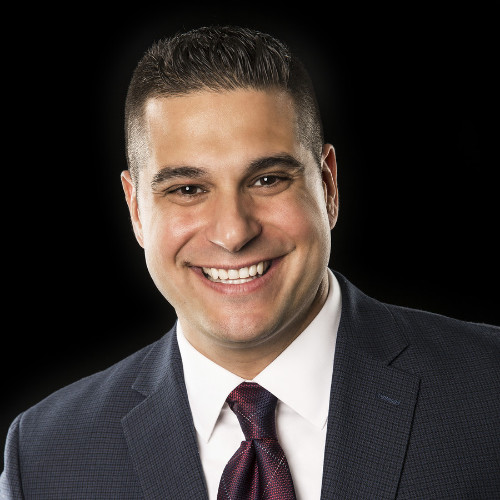
Vincent Pietrafesa
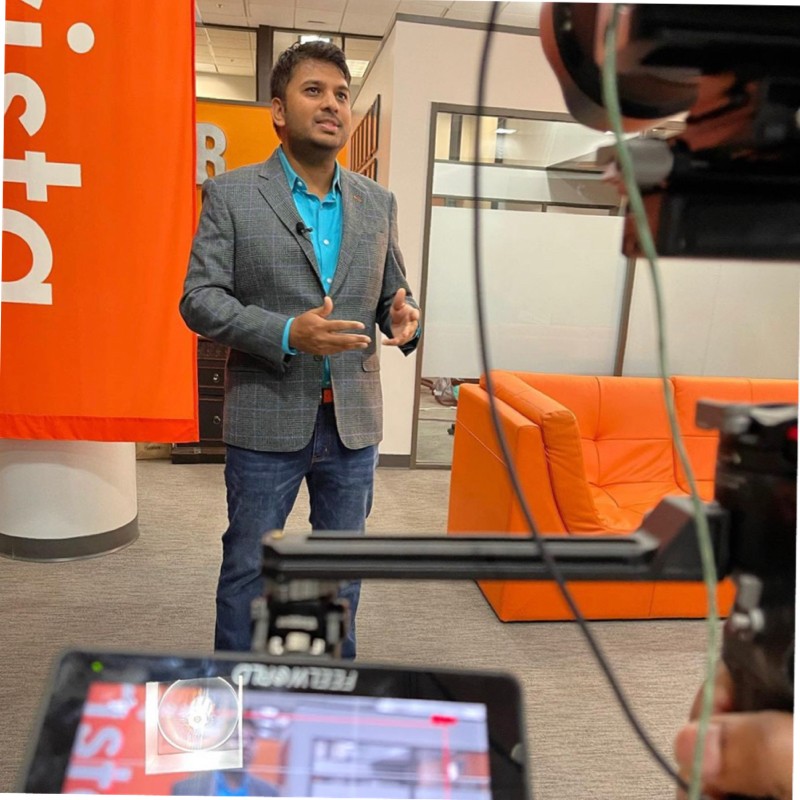
Ajay Gupta
Today's Guests
